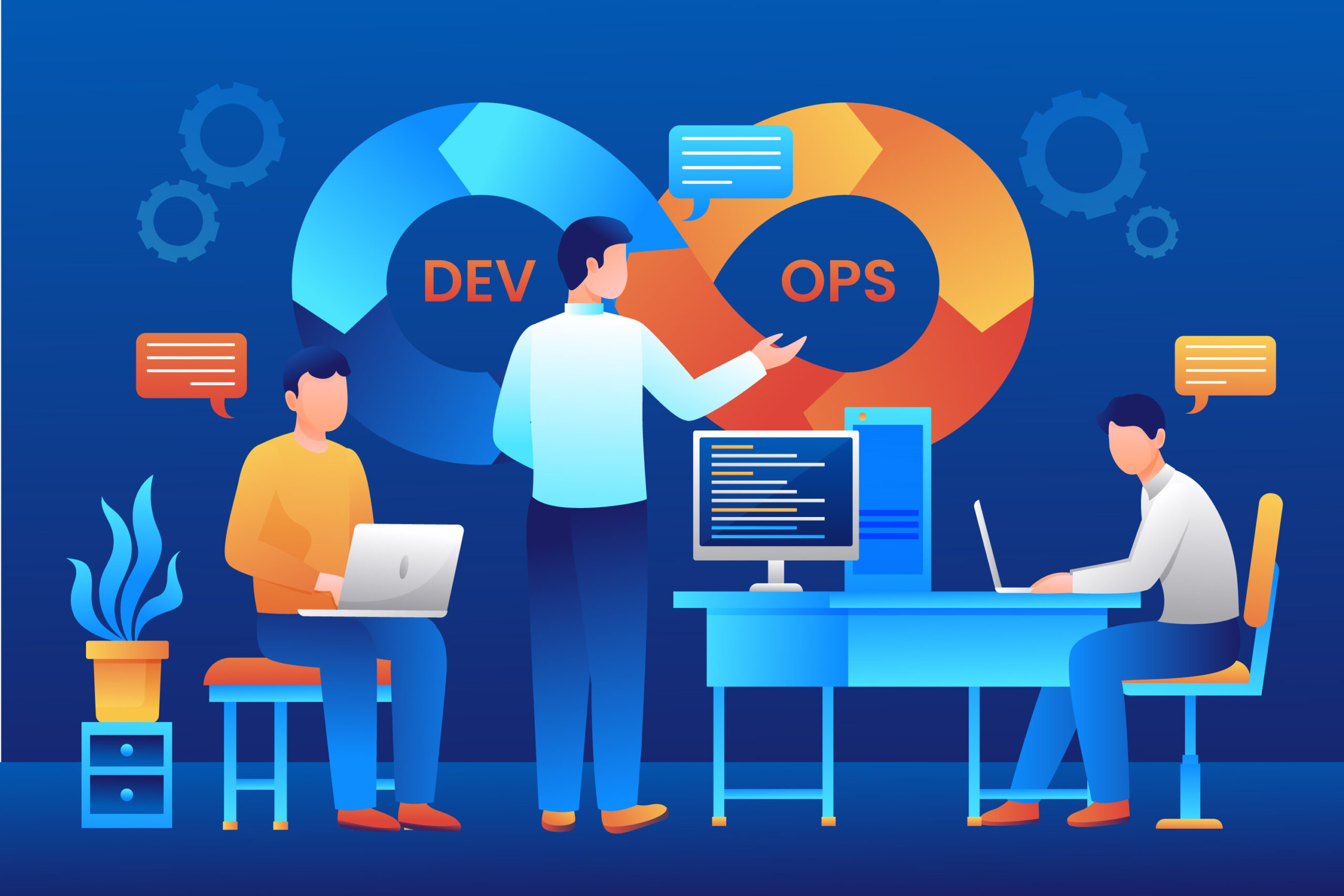DevOps Research and Assessment

Introduction
In today’s fast-paced digital landscape, organizations strive to deliver high-quality software at unprecedented speeds. DevOps, a portmanteau of “Development” and “Operations,” has emerged as a transformative approach to achieving this goal. By fostering collaboration between development and operations teams, DevOps streamlines workflows, enhances productivity, and drives innovation. However, implementing DevOps effectively requires thorough research and assessment to align tools, processes, and culture with organizational objectives. This article explores the intricacies of DevOps research and assessment, drawing parallels with tools like monday.com – a versatile DevOps software—and provides a comprehensive guide to navigating this critical process.
Understanding DevOps: A Paradigm Shift in Software Delivery
DevOps is more than a methodology; it’s a cultural shift that bridges the gap between software development and IT operations. Traditionally, these teams operated in silos, leading to miscommunication, delayed releases, and inefficiencies. DevOps breaks down these barriers by promoting shared responsibility, automation, and continuous improvement.
Key Principles of DevOps
To fully grasp DevOps, it’s essential to understand its core principles:
- Collaboration: DevOps encourages cross-functional teamwork, ensuring developers, operations professionals, and other stakeholders work cohesively.
- Automation: Automating repetitive tasks like testing, deployment, and monitoring reduces errors and accelerates delivery.
- Continuous Integration and Continuous Deployment (CI/CD): CI/CD pipelines enable frequent code integration and automated deployments, ensuring rapid and reliable releases.
- Monitoring and Feedback: Real-time monitoring and feedback loops allow teams to identify issues early and improve iteratively.
- Cultural Shift: DevOps fosters a culture of trust, accountability, and shared goals, aligning teams toward a common purpose.
By embracing these principles, organizations can achieve faster time-to-market, improved software quality, and enhanced customer satisfaction. However, before embarking on a DevOps journey, thorough research and assessment are crucial to ensure success.

The Importance of DevOps Research and Assessment
DevOps is not a one-size-fits-all solution. Each organization has unique needs, challenges, and goals, making research and assessment pivotal to tailoring a DevOps strategy. Without a clear understanding of current processes, tools, and team dynamics, organizations risk adopting practices that may not align with their objectives.
Why Research and Assessment Matter
- Identifying Gaps: Research helps uncover inefficiencies in existing workflows, such as manual processes or communication bottlenecks.
- Aligning with Goals: Assessments ensure that DevOps practices align with business objectives, such as reducing costs or improving scalability.
- Selecting the Right Tools: With countless DevOps tools available, research helps identify solutions like monday.com that best fit the organization’s needs.
- Cultural Readiness: Assessing team dynamics and organizational culture determines whether teams are prepared for the collaborative mindset DevOps requires.
- Measuring Success: Establishing benchmarks during assessment enables organizations to track progress and measure the impact of DevOps initiatives.
By conducting thorough research and assessment, organizations can create a tailored DevOps roadmap that maximizes efficiency and minimizes risks.
Conducting DevOps Research: A Step-by-Step Approach
Effective DevOps research involves gathering data, analyzing current processes, and exploring industry best practices. Below is a structured approach to conducting DevOps research:
1. Define Objectives and Scope
Before diving into research, organizations must clarify their goals. Are they aiming to reduce deployment times, improve software quality, or enhance team collaboration? Defining clear objectives helps focus research efforts. Additionally, determining the scope—whether enterprise-wide or team-specific—ensures resources are allocated effectively.
For example, a company like monday.com offers customizable workflows that can align with specific DevOps objectives, such as task automation or project tracking. Researching how such tools fit into the organization’s goals is a critical first step.
2. Analyze Current Processes
Next, organizations should map out existing workflows to identify pain points. This involves:
- Documenting Processes: Create a detailed overview of development, testing, deployment, and operations workflows.
- Identifying Bottlenecks: Pinpoint areas where delays or errors occur, such as manual testing or siloed communication.
- Gathering Feedback: Engage with developers, operations teams, and stakeholders to understand their challenges and needs.
For instance, if teams rely on disparate tools for project management and CI/CD, integration issues may arise. Tools like monday.com can centralize workflows, but research is needed to confirm compatibility with existing systems.
3. Explore Industry Best Practices
Studying successful DevOps implementations provides valuable insights. Organizations can:
- Review Case Studies: Analyze how similar organizations have adopted DevOps to address challenges.
- Adopt Frameworks: Explore frameworks like CALMS (Culture, Automation, Lean, Measurement, Sharing) to guide implementation.
- Leverage Standards: Use standards like DORA (DevOps Research and Assessment) metrics to benchmark performance.
For example, DORA’s four key metrics—deployment frequency, lead time for changes, mean time to restore, and change failure rate—offer a data-driven way to assess DevOps maturity.
4. Evaluate Tools and Technologies
The DevOps ecosystem is rich with tools for automation, collaboration, and monitoring. Researching tools involves:
- Categorizing Needs: Identify tools for version control (e.g., Git), CI/CD (e.g., Jenkins), collaboration (e.g., monday.com), and monitoring (e.g., Prometheus).
- Assessing Compatibility: Ensure tools integrate seamlessly with existing systems.
- Considering Scalability: Choose solutions that can grow with the organization.
monday.com, for instance, excels in project management and team collaboration, offering customizable boards to track DevOps tasks. Researching its integration with CI/CD pipelines or monitoring tools is essential for a cohesive tech stack.
5. Engage Stakeholders
Successful DevOps research requires input from all stakeholders, including developers, operations teams, and leadership. Conducting workshops, surveys, or interviews ensures that diverse perspectives shape the DevOps strategy.
Assessing DevOps Readiness: A Comprehensive Framework
Once research is complete, assessing organizational readiness is the next step. This involves evaluating processes, culture, and technology to determine how prepared the organization is for DevOps adoption.
1. Cultural Assessment
DevOps thrives in a collaborative, transparent culture. To assess cultural readiness:
- Evaluate Team Dynamics: Are teams open to cross-functional collaboration, or do silos persist?
- Assess Leadership Support: Is leadership committed to fostering a DevOps culture?
- Measure Change Resistance: Identify resistance to change and develop strategies to address it, such as training or workshops.
For example, monday.com can facilitate cultural alignment by providing a centralized platform for team communication and task visibility, reducing silos.
2. Process Assessment
A thorough process assessment identifies areas for improvement:
- Workflow Efficiency: Are processes manual or automated? For instance, manual deployments may indicate a need for CI/CD pipelines.
- Bottleneck Identification: Use value stream mapping to pinpoint delays in the software delivery pipeline.
- Compliance Requirements: Ensure processes align with regulatory or security standards, especially in industries like finance or healthcare.
3. Technology Assessment
Evaluating the current tech stack is critical to identifying gaps:
- Tool Audit: Document all tools in use and assess their effectiveness.
- Integration Capabilities: Can tools like monday.com integrate with existing CI/CD or monitoring systems?
- Scalability and Performance: Ensure the tech stack can handle increased workloads as DevOps practices scale.
4. Skills Assessment
DevOps requires a diverse skill set, including coding, automation, and collaboration. Assess:
- Team Skills: Do team members have expertise in tools like Docker, Kubernetes, or monday.com?
- Training Needs: Identify gaps and plan training programs to upskill teams.
- Hiring Needs: Determine if additional expertise is needed to support DevOps initiatives.
5. Metrics and KPIs
Establishing key performance indicators (KPIs) is essential for measuring DevOps success. DORA metrics, mentioned earlier, provide a solid foundation. Additional KPIs include:
- Cycle Time: Time from code commit to deployment.
- Error Rates: Frequency of bugs or failures in production.
- Team Satisfaction: Measures team morale and collaboration effectiveness.
By combining research and assessment, organizations can create a robust DevOps strategy tailored to their needs.

Leveraging Tools like monday.com in DevOps
Tools play a pivotal role in DevOps success, and monday.com is a standout solution for managing DevOps workflows. Its flexibility and user-friendly interface make it ideal for coordinating tasks, tracking progress, and fostering collaboration.
How monday.com Supports DevOps
- Task Management: monday.com’s customizable boards allow teams to track tasks across the DevOps pipeline, from coding to deployment.
- Collaboration: Real-time updates and communication features reduce silos and keep teams aligned.
- Automation: Automations streamline repetitive tasks, such as notifying teams when a deployment is complete.
- Integration: monday.com integrates with tools like Jira, Slack, and Jenkins, creating a unified DevOps ecosystem.
- Visualization: Dashboards provide visibility into project status, helping teams monitor KPIs and identify bottlenecks.
For example, a DevOps team could use monday.com to create a board for tracking CI/CD pipeline stages, with columns for “In Development,” “Testing,” and “Deployed.” Automations could notify stakeholders when tasks move between stages, improving transparency.
Comparing monday.com with Other Tools
While monday.com excels in collaboration and task management, other tools like Jira focus on issue tracking, and Jenkins specializes in CI/CD. Researching how these tools complement each other is key to building an effective DevOps tech stack.
Challenges in DevOps Research and Assessment
Despite its benefits, DevOps research and assessment come with challenges:
- Resistance to Change: Teams accustomed to traditional workflows may resist adopting DevOps practices.
- Tool Overload: The abundance of DevOps tools can overwhelm organizations, making selection difficult.
- Skill Gaps: Lack of expertise in automation or cloud technologies can hinder implementation.
- Cultural Misalignment: Without leadership buy-in, cultural transformation efforts may stall.
- Measurement Challenges: Defining and tracking meaningful KPIs requires careful planning.
To overcome these challenges, organizations should prioritize clear communication, invest in training, and leverage tools like monday.com to streamline processes.
Best Practices for Successful DevOps Implementation
Based on research and assessment, organizations can adopt the following best practices:
- Start Small: Begin with a pilot project to test DevOps practices before scaling.
- Foster Collaboration: Use tools like monday.com to promote transparency and teamwork.
- Automate Strategically: Focus automation efforts on high-impact areas like testing and deployment.
- Monitor Continuously: Implement monitoring tools to track performance and gather feedback.
- Iterate and Improve: Use assessment findings to refine processes iteratively.
Case Study: DevOps Success with monday.com
Consider a mid-sized tech company struggling with slow release cycles due to siloed teams. Through DevOps research, they identified manual testing and poor communication as key bottlenecks. An assessment revealed cultural resistance to change and a lack of centralized task management.
By adopting monday.com, the company created a unified workflow for tracking development, testing, and deployment tasks. Automations reduced manual effort, and dashboards provided visibility into progress. Within six months, deployment frequency doubled, and team satisfaction improved significantly, demonstrating the power of research-driven DevOps implementation.
Conclusion
DevOps research and assessment are the cornerstones of a successful DevOps transformation. By understanding organizational needs, evaluating processes, and selecting tools like monday.com, organizations can unlock the full potential of DevOps. While challenges like resistance to change and tool overload may arise, a structured approach to research and assessment mitigates risks and ensures alignment with business goals. As the digital landscape evolves, DevOps will continue to drive innovation, and thorough preparation will remain the key to sustained success.
You might also be interested in DevOps Engineer Roles and Responsibilities



